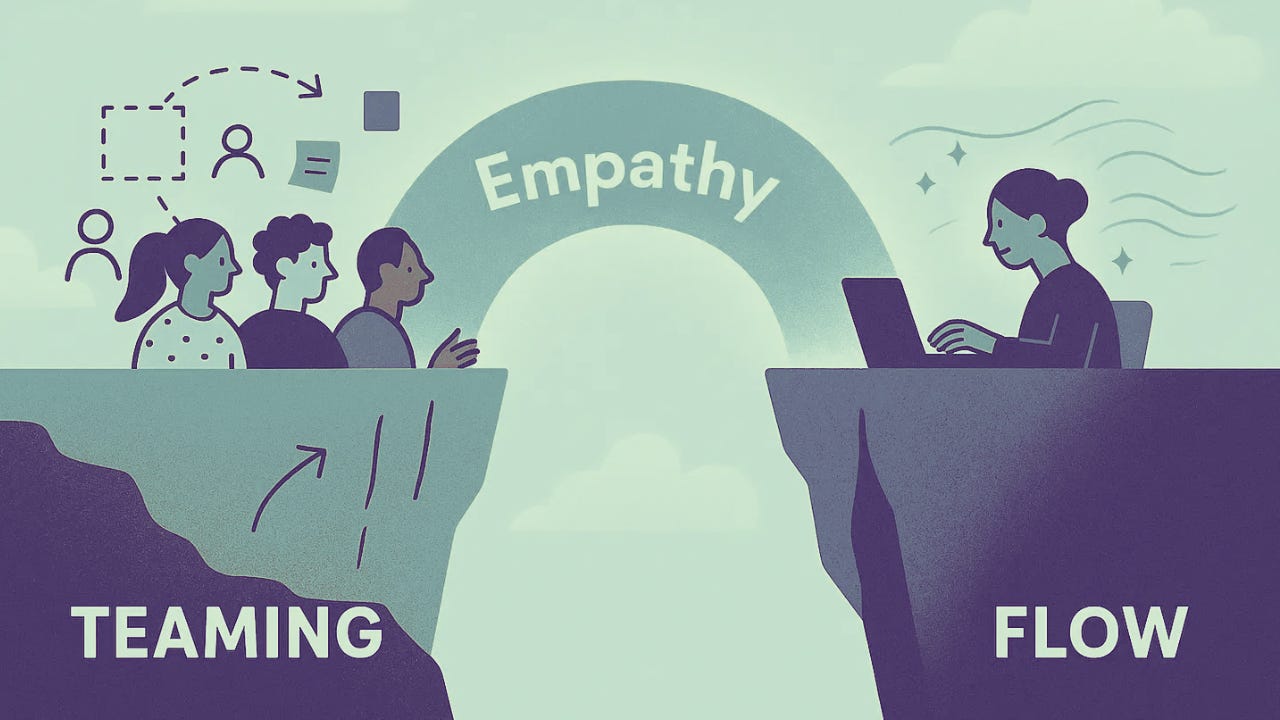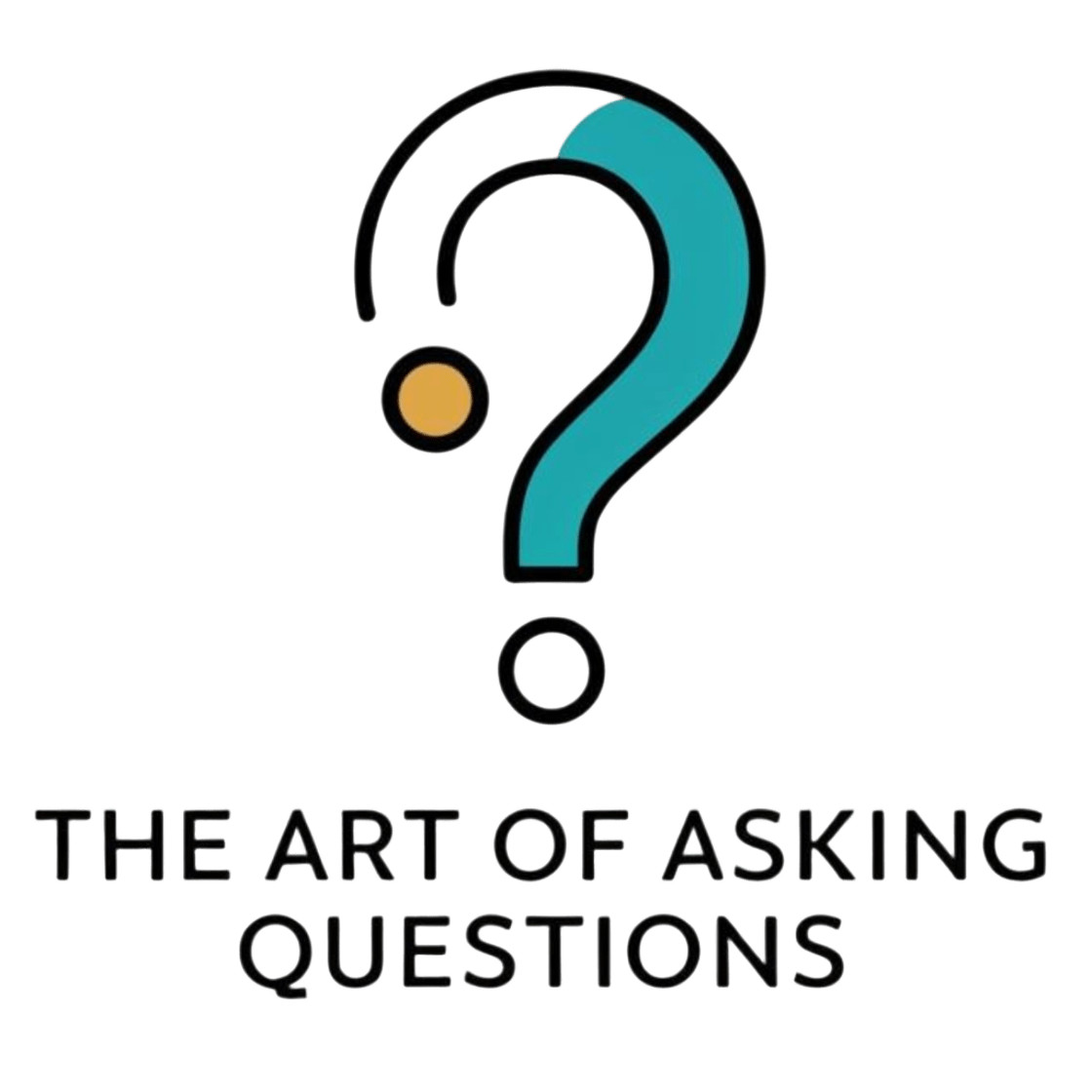It’s my absolute pleasure to welcome
on this guest post for Empathy Elevated. His piece unpacks a challenge so many of us face: how to find flow in a world of constant context-switching and ever-shifting teams.With clarity and depth, he shows how empathy isn’t just a “soft skill”—it’s the key to building trust and momentum when time is short and the stakes are high. I’m excited to share his perspective with you. Let’s begin…
A day in the life of a modern knowledge worker might involve three projects, five meetings, multiple Slack channels, and no fixed team. One minute you're troubleshooting with a designer. Next, you're pulled into a quick-turnaround task force. By the end of the day, you've collaborated with a dozen people, few of whom you report to or work with regularly.
This is the reality of work today in many industries, not just in early-stage startups or crisis response teams. Stable, long-term teams are increasingly rare. Instead, we form, storm, and disband at pace. And the success of these fast-cycle collaborations hinges not on who's in charge, but on how quickly we can team.
Teaming, as Amy Edmondson puts it, is a verb. It's not an established, fixed group of people cooperating in pursuit of a common goal. It's a dynamic activity determined by the mindset and practices of teamwork; it requires us to be flexible, so we can collaborate when and with whom this is required.
And yet, even if the reality of knowledge jobs has been shifting towards dynamic teaming, we still long for flow - that rare state of deep focus and momentum where the work seems to do itself.
The question is: How can we find or build flow when the work structure itself is fluid?
In my view, we can achieve flow in teaming by mixing three ingredients: shared goals, emotional attunement and an ability to quickly build trust - with empathy as the glue that binds them.
Let’s explore why this is the case.
Doing Deep Work in a Demanding World
Psychologist Mihaly Csikszentmihalyi defined 'flow' as the state in which people are so immersed in an activity that nothing else seems to matter. It happens when skill meets challenge. You know what you're doing, why you're doing it, and how it's going.
It's a powerful experience. Time dilates. Distractions fade. Work feels meaningful.
There is, however, a challenge: the most straightforward examples of flow that come to mind focus on the individual perspective - the athlete in the zone, the solo coder in the groove. But modern work is rarely solo. It's collaborative, messy, and frequently interrupted. It happens in meetings, documents, shared codebases, and half-formed Google Docs.
In my experience, flow is certainly possible to achieve in team settings, even with people you barely know, but only when the act of teaming is taken seriously.
Teaming is Edmondson's term for the process of collaborating on the fly with people you may not know, in roles that may not be clearly defined, under conditions that are often volatile. It's what happens when a cross-functional tech squad jumps on a last-minute launch, or when doctors from different departments assemble for an emergency surgery.
There's no time for elaborate onboarding or building rapport. Instead, you rely on shared purpose, a sense of what others are paying attention to, and the ability to quickly tune into each other's cues - even without knowing each other well.
That is, you rely on empathy.
In a fluid team, empathy is what lets people sync. Without it, everyone clings to their assumptions. With it, we align.
Here’s an example:
It’s Friday, 5pm. A customer-critical bug has just been flagged in the latest product release.
A designer, a developer and a product manager jump into an impromptu call. They’ve never worked as a trio before. No time for intros, no time for blame.
The developer screen-shares the issue. The designer watches quietly, notices their rising frustration and gently says, “Let’s slow down a sec - can you show us what you expected to happen?” That pause defuses the tension.
The product manager jumps in: “If we can’t push a full fix, what’s the lowest-risk workaround?” The designer nods. “I can update the UI copy to manage expectations while we patch the logic.
No turf battles. Just fast alignment, micro-adjustments and visible trust.
In 28 minutes, the team ships a fix and an updated message. Everyone logs off calm. No heroes. Just sync.
The Recipe for ‘Empathetic Team Flow’
Empathetic team flow sits at the intersection of the theories of teaming and flow - with empathy as the interface layer.
I would argue that you need three ingredients for this:
1. Shared Goals
Flow requires clarity, and teaming demands alignment. You can’t just say "We’re building X" - you have to mean the same thing by it. Empathy helps uncover hidden assumptions.
➡️ Try asking: When you say ‘prototype,’ do you mean a mock-up or something functional?
2. Shared Signals
Great teams can respond to subtle cues and feedback in real time. That’s only possible when people feel safe showing emotion, and others are attuned enough to pick it up. A furrowed brow. A sigh. A pause. Empathetic team members notice, check in, and adjust.
➡️ Try asking: I noticed a pause - are you unsure, or is something not sitting right?
3. Shared Trust
Flow emerges when people stop micromanaging and start trusting the process. In a teaming context, this is achieved by trusting that your colleagues (yes, even new ones!) will catch the baton. Empathy speeds up that trust by signalling: "I see you. I get your constraints. I’ve got your back." We all shine at the right time.
➡️ Try asking: Is there anything I can clarify or unblock before you take this on?
Why This Matters
Most of us work in motion. We shift between teams, tasks, and contexts, rarely staying put for long. We’re part of networks. We jump in, contribut,e and move on. We launch projects with people we’ve just met (even Substack collaborations!).
In this world, teaming isn’t a process, but a reflex. And empathy creates the conditions for flow, even when you’re midair, mid-project, or mid-pivot. It makes teaming feel intuitive, even with strangers. It replaces formal structures with human attunement.
And, in fast-moving, high-pressure environments, that’s not just nice to have. It’s survival.
© 2025 Andrea Chiarelli
This guest post was written by
a management consultant with over a decade of experience across industry and academia. His writing focuses on how we can ask better questions, as well as on how these can help shape organisations and their cultures. Find Andrea’s Substack through The Art of Asking Questions.





I love hearing about the connection between empathy and flow! Great piece!
Yes, we coders form different teams on the go. Also with looking at the requirements of that bugfix. Concentrating on that thing now, focused, quite similar to an emergency surgery as you pointed out. Also, while we are talking about doctors, they often regularly meet and exchange ideas to resolve the hardest medical questions. Diagnosing rare diseases from sharing insights. Empathy towards the patient to ask them the right questions that uncover the specific details of symptoms showing where to look at. Replacing patient with customer, 'doesn't work' becomes a detailed bug report ready to be fixed.